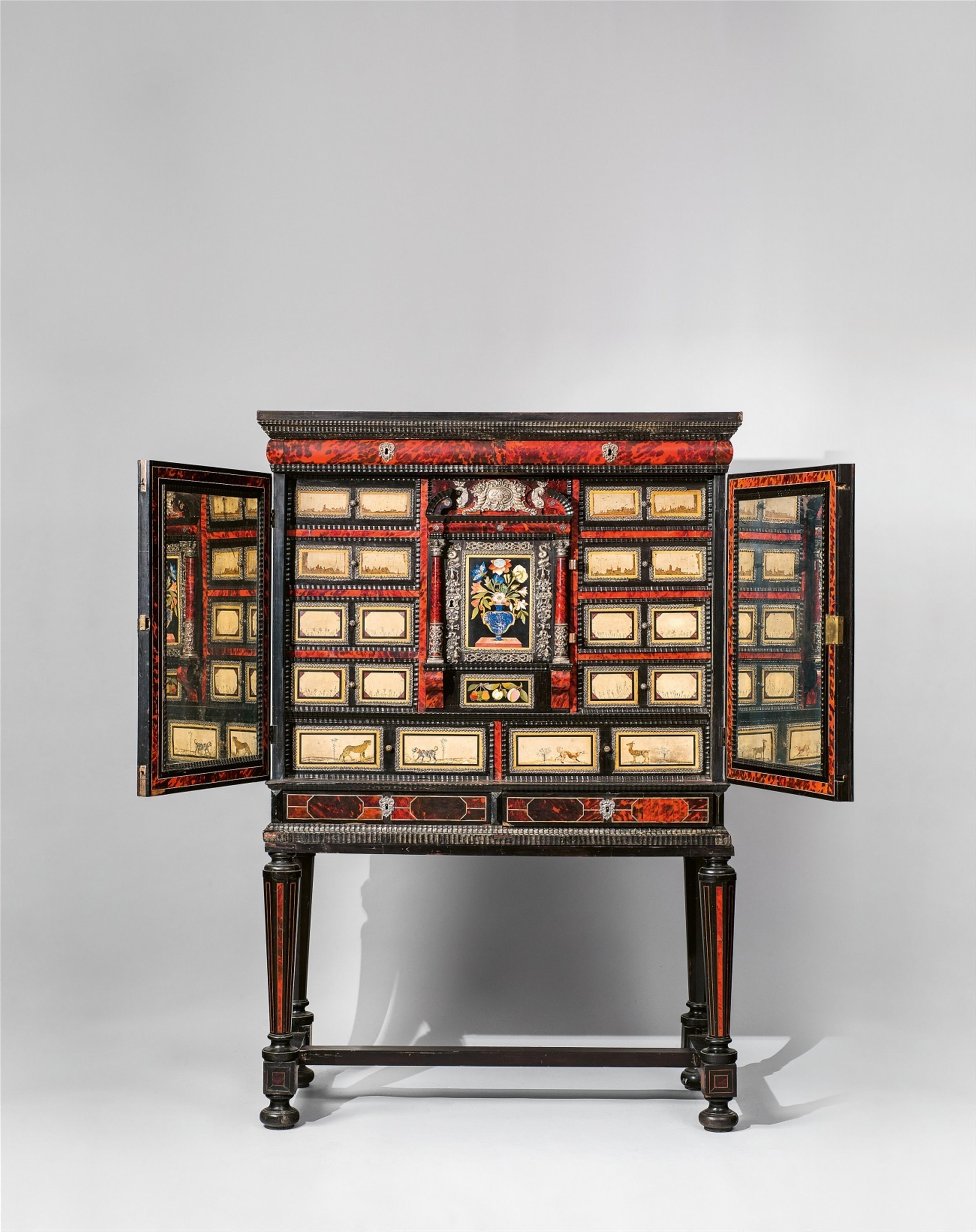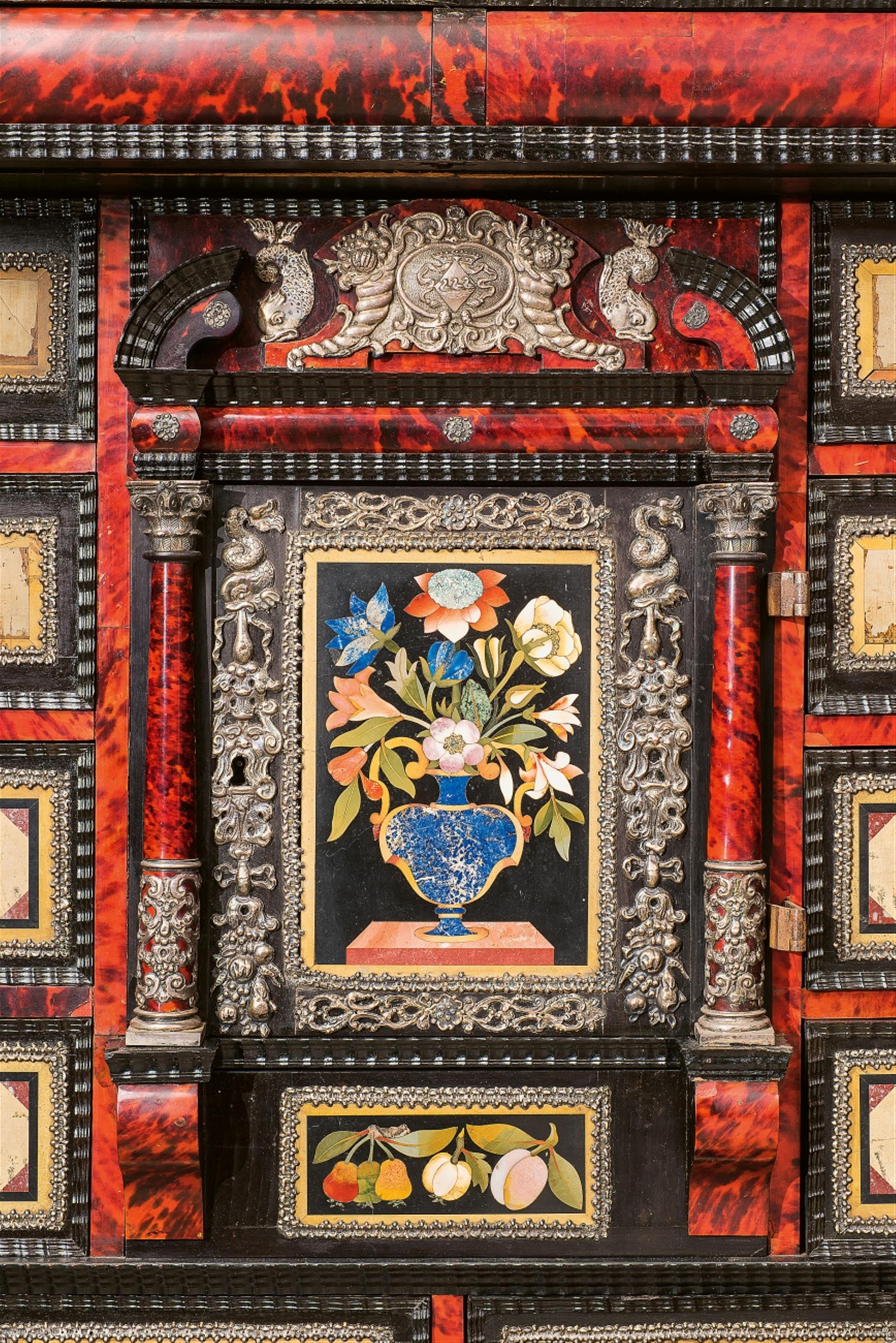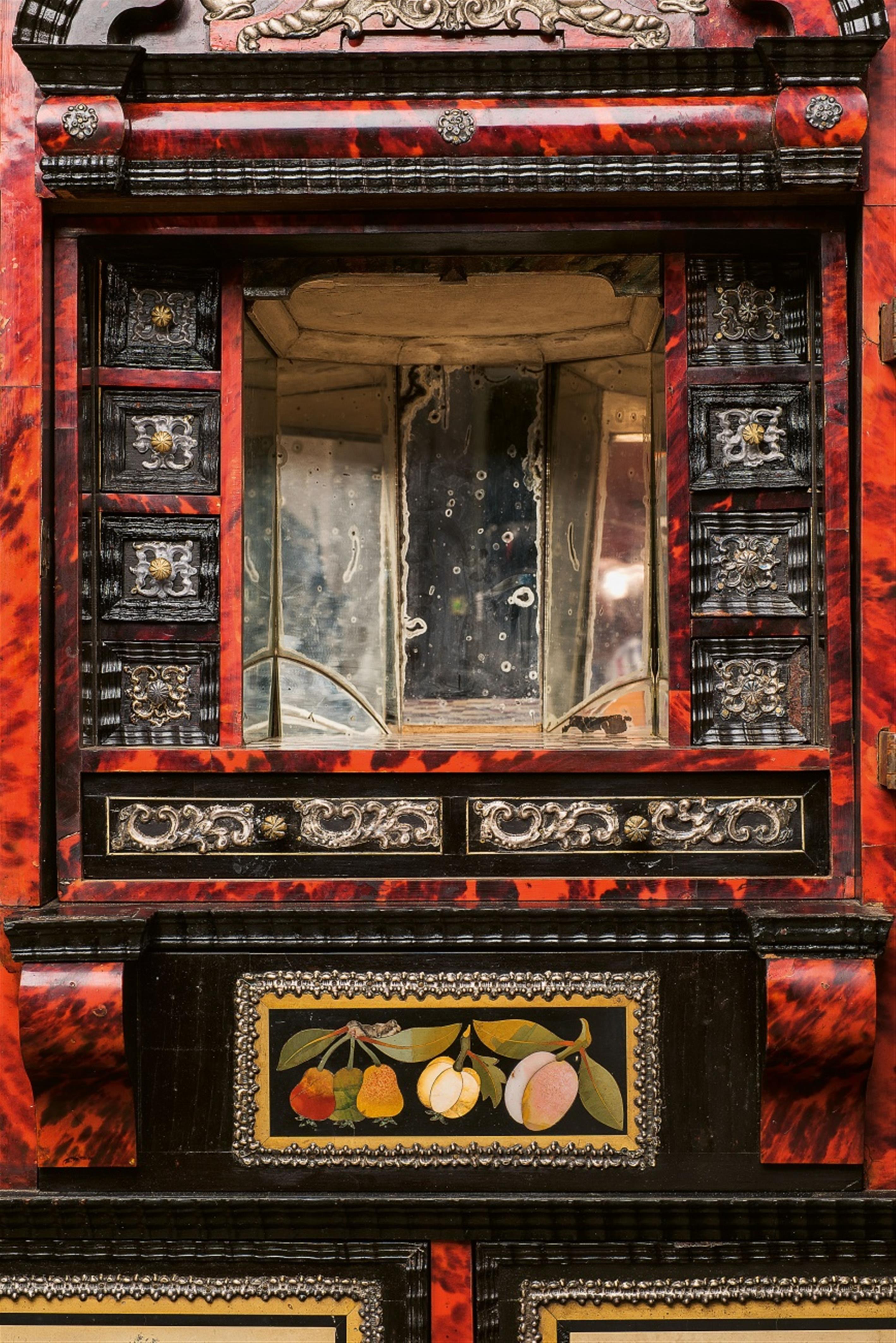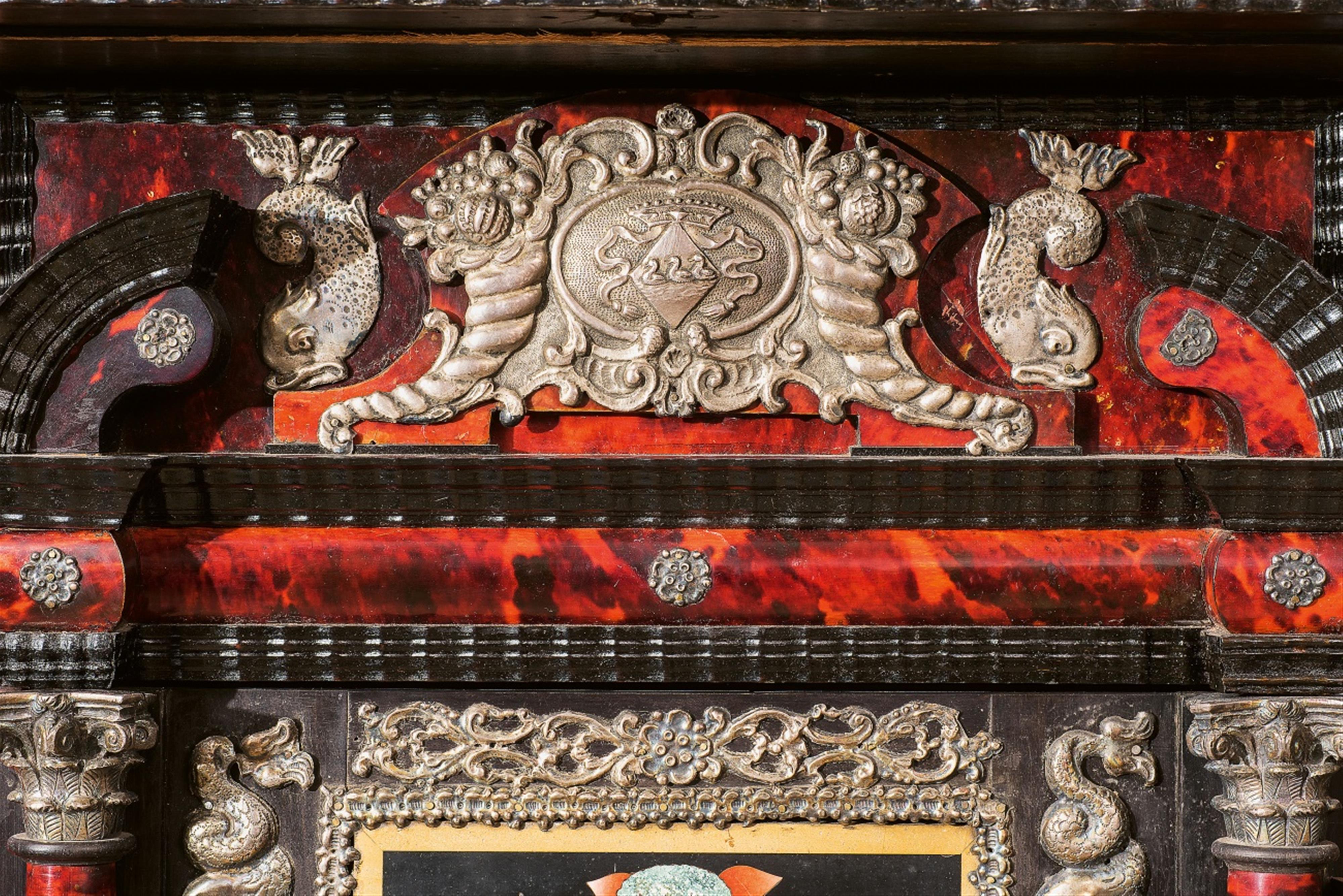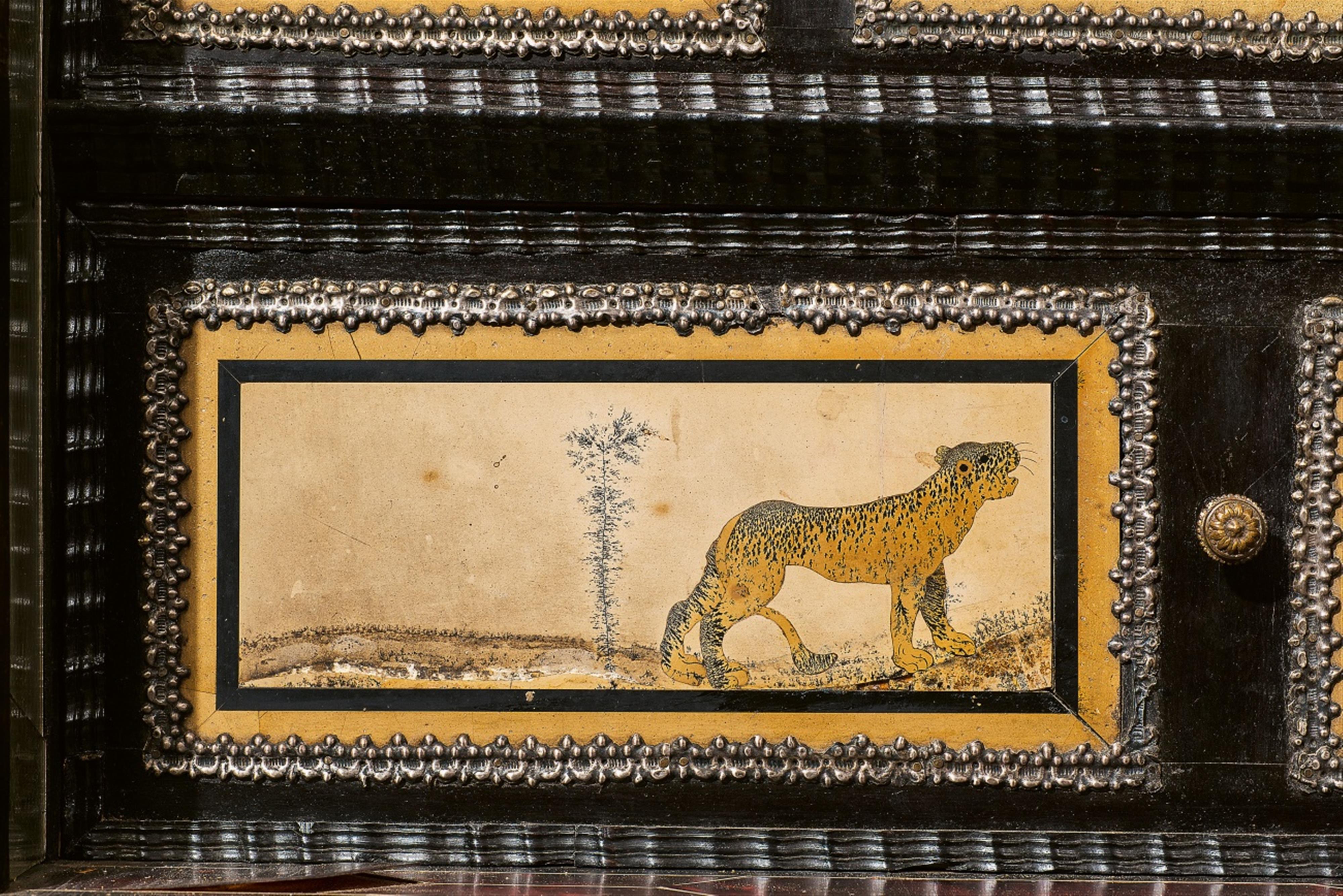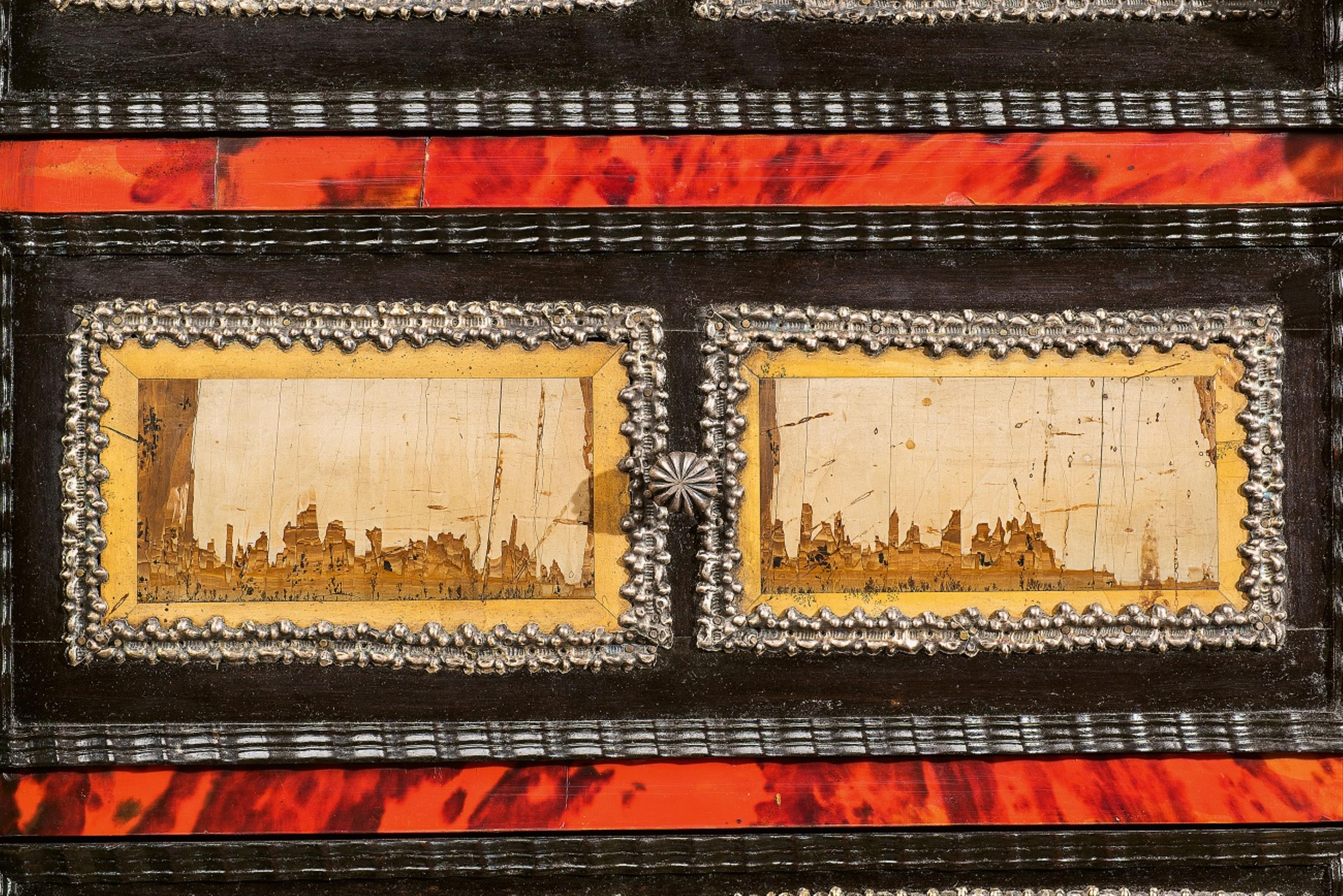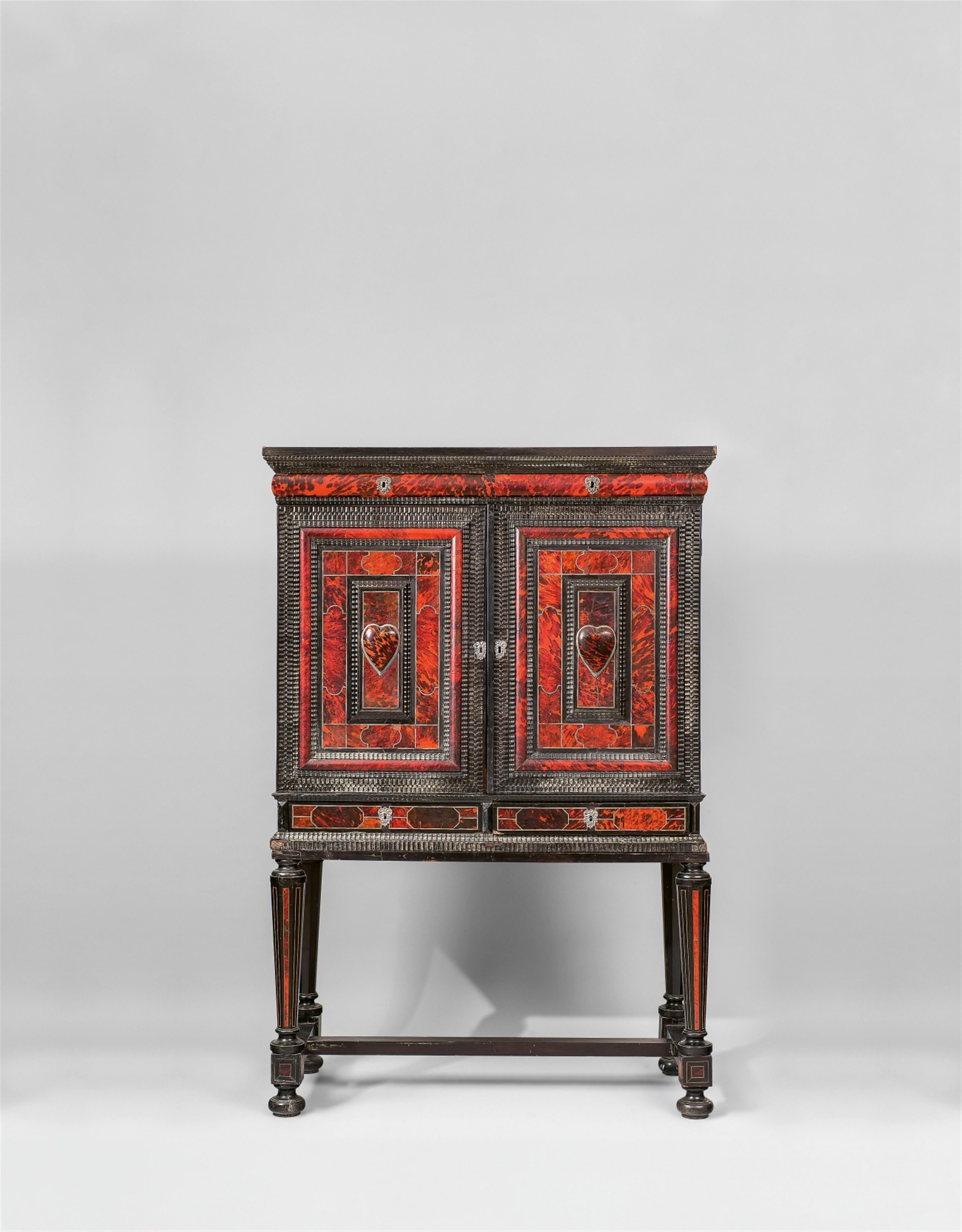An unusual Antwerp inlaid cabinet
Tortoiseshell veneer, ebonised wood and ebony on softwood, bone inlays, silver appliques, various marbles and hardstone, older and presumably original mirror glass. Rectangular cabinet with slightly convex two-drawered pediment and two doors with heart-shaped tortoiseshell panels. Mirrors to the insides of the drawers. The inside of the cabinet divided into ten drawers surrounding a central compartment beneath a pediment with a coat-of-arms. All drawers decorated with mottled/landscape marble and pietre dure. The door or the compartment with a coloured stone marquetry panel depicting a vase of flowers in lapis lazuli. Fine original mountings with grotesques.
On a later associated stand with four facetted legs and central panel. Minor losses and ammendments. The stand slightly unstable. H with stand 171.3, without 102.5, W 115.3, D 53.8 cm.
Late 17th C., the marble and pietre dure inlays attributed to the Florentine Workshops.
The prototype for this type of Italian pietre dure inlaid cabinet was the famous Augsburg cabinet of Gustav Adolph that is now housed in the Museum Gustavianum of the University of Uppsala. The cabinet is based on a design by the Augsburg art dealer Philipp Hainhofer, who also commissioned the Pommersche Kunstschrank. Pietre dure inlays had been popular since the 16th century and were Florence's finest and most sought-after export. This cabinet may have been made specially to display these valuable marble inlays.
The Opificio delle Pietre Dure, literally pietre dure workshops, were founded in 1588 by Grand Duke Ferdinand I de Medici and were merged with the workshops of the Galleria dei Lavori in the Uffizi. The workshops were charged with producing hardstone inlays for interior décor and furniture, as well as laying decorative stone flooring, such as that in the Cappella dei Principi. The workshops experienced a steady rise in commissions until well into the 18th century. There were other workshops producing stone inlays north of the Alps, such as that of Cosimo Castrucci in Prague or the Manufacture royale des Gobelins in Paris, but most of their products were not intended for export. Only the Florentine artisans were able to produce so efficiently that their small stone panels were available for sale individually. Today they can be found in curiosity cabinets throughout Europe.

